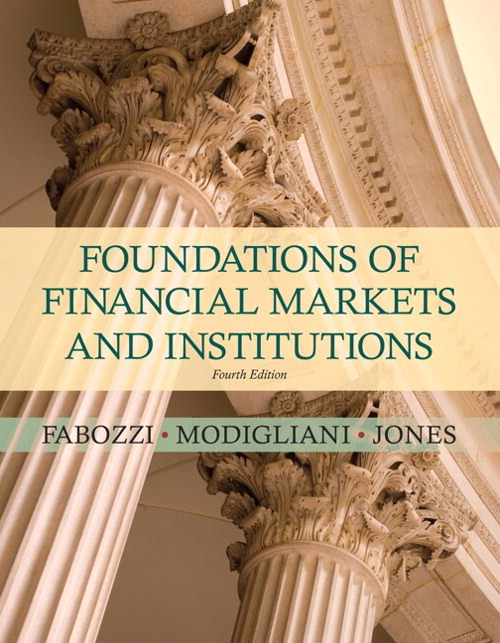Journal of Derivatives & Hedge Funds The pricing of convertible bonds within the Tsiveriotis and
Post on: 26 Апрель, 2015 No Comment

Journal of Derivatives & Hedge Funds (2008) 14, 50–64. doi:10.1057/jdhf.2008.7
The pricing of convertible bonds within the Tsiveriotis and Fernandes framework with exogenous credit spread: Empirical analysis
Practical applications Owing to its relative simplicity and its ability to incorporate the main characteristics of convertibles that have limited market data, the Tsiveriotis and Fernandes framework is widely used by practitioners for pricing convertible bonds. In our research, we addressed the most important unanswered question regarding the Tsiveriotis and Fernandes framework; does the framework provide accurate and practical valuation consistent with the market? We conducted what we believe is the most extensive empirical research on the subject and found that using a moving-average credit spread results in a valuation that is consistent with the market. The existence of a continuous credit spread that can be used to achieve accurate pricing establishes solid practical grounds for the hedging strategy based on historical implied credit spread that is used by many hedge funds. The co-integration of historical volatility and credit spread described in the article makes it possible, in many cases, to price convertibles without complete market information. Practical advice and examples are provided.
Victor Gushchin 1 and Erwan Curien 2
Correspondence: Victor Gushchin, Sophis Technology, 61–62 Fitzwilliam Lane, Dublin 2, Republic of Ireland. Tel: +353 1 775 39 00; Fax: +353 1 661 92 73; E-mail: victor.gushchin@sophis.net
1 Victor Gushchin has an MS in Mathematics and Applied Mathematics and a PhD in Economics from Moscow State University. He is currently employed as Manager of the Financial Model Validation and QA Front Office teams for Sophis Technology Ireland. In this post, he is also responsible for developing and validating pricing models for convertible bonds and providing assistance to hedge funds in this respect.
2 Erwan Curien was educated in mathematics and physics (Ecole Polytechnique, France, 1998), specialising in finance and statistics (ENSAE, 2001). He is currently employed as the manager of the Quantitative Research team for Sophis Technology France. In this post, he is also responsible for developing models for convertible bonds. He has published several articles on convertible bonds and credit derivatives.
Received 20 March 2008; Revised 20 March 2008.
Abstract
Despite a huge popularity of convertible bonds and a variety of different pricing models, very little empirical research on their valuation has been undertaken. This paper investigates the pricing performance of arguably the most popular among practitioners, the Tsiveriotis and Fernandes approach implemented within a trinomial-tree model with exogenous credit spread using daily market prices on the largest available historical database (
1500 CBs). We demonstrate that using a constant credit spread within that framework would lead to significant mispricing in average. By contrast, we present a practical approach for valuing convertible bonds with moving-average credit spread, which leads to acceptable results. We prove that historical volatility and implied credit spread are cointegrated for the majority of bonds in our sample. This allows us to model credit spread based on cointegrated relationship with volatility and extend our model to the cases with limited market information available. The mispricing is proven to be statistically insignificant in the researched convertible bonds.
Keywords:
convertible bond, credit spread, empirical analysis, Tsiveriotis and Fernandes, cointegration, volatility
INTRODUCTION
The market for convertible bonds has grown steadily over the past decade. In 2002 there were approximately $ 270 billion convertibles outstanding, $ 500 billion in 2003, 1 $ 600 billion in 2004 2 and, by our estimation, reached $ 700 billion in 2006. The continued expansion and diversity of contractual features of convertibles including different types of call clauses, with or without a hurdle, option to change the conversion ratio, 3 clauses that restrict the conversion right of holders to contingent events (CoCo clause, conversion based on stock price, CoCoCB clause, conversion based on trading price condition), mandatory clauses, 4 perpetual feature 5 and others make convertibles a challenging instrument to price.
Some limited models for valuation of convertibles emerged in the 1960s, but a theoretically solid framework was first developed by Ingersoll. 6 He used a structural approach to derive closed-form solutions for the value of convertible bonds in a variety of special cases. Brennan and Schwartz 7 developed PDE and boundary conditions under the same assumptions and extended their model 8 by including stochastic interest rates. The drawback of the structural approach is that the value of the firm is not a traded asset and difficult to estimate.
McConnel and Schwartz 9 proposed the model in which the basic underlying factor is the issuing firm’s stock price, which is traded and easily observed. Tsiveriotis and Fernandes 10 recognised that equity and debt components of convertible bonds are subject to different default risk and derived a pair of coupled differential equations that can be solved explicitly. Yigitbasioglu 11 extends this framework to multiple factors in the case of cross-currency convertibles.
As an alternative to the structural approach, a reduced-form approach was pioneered by Jarrow and Turnbull 12 and Jarrow et al.. 13 It was further extended by Duffie and Singleton, 14 Davis and Lischka, 15 Takahashi et al.. 16 Andersen and Buffrum 17 and others. In this framework, stock price dynamics incorporates default events and it does not drop to 0 immediately in case of default. Ayache et al. 18 consider a wide variety of assumptions concerning the behaviour of the stock on default and develop hedge strategies under those assumptions.
Despite the variety and complexity of modern models, no complete empirical research on the pricing of convertible bonds has been done. Existing research includes the papers of King, 19 Carayannopoulos, 20 Carayannopoulos and Kalimipalli, 21 Buchan, 22 Ammann et al. 23. 24 and Alex and Chan. 25
A drawback of these studies is in the very limited number of instruments analysed and the short studied history of convertibles: King 19 performs his tests for 103 American convertible bonds for two calendar days, Buchan 22 analyses pricing models for only one day, Carayannopoulus 20 investigates 30 American bonds for 12 days, Ammann et al. 23 examine 21 French convertibles for a 1.5-year history (from February 1999 until August 2000). In our research we investigate more that 1,500 CBs quoted on eight leading exchanges 26 and perform more than one million simulations (more than 2.5 years of historical data per instrument in average).
In this paper we empirically test the ‘CB model’ developed by Sophis 27 from the classic Trinomial model using Tsiveriotis and Fernandes’ framework with exogenous credit spread. Although that approach was criticised by some researchers (Ayache et al. 18 ), it still remains arguably the most popular among practitioners. This is partly due to the fact that practitioners build their investment and hedging strategies based on limited market information, which often makes impossible calibration of more complex models.
The main contributions of this work are as follows:
- — we discuss the Tsiveriotis framework in the trinomial context and show its consistency with advanced credit models under some assumptions;
- — we investigate use of constant credit spread and empirically prove that it leads to a considerable mispricing of convertible bonds;
- — we demonstrate that moving-average credit spread results in a valuation of convertible bonds, which is consistent with the market;
- — we prove that historical volatility and implied credit spread are cointegrated for most convertibles in our sample and extend our model to the situation when the bond’s market price is not available for some time;
- — we empirically test convertible bonds’ valuation using credit spread based on a cointegrated relationship with volatility and show that mispricing is statistically insignificant in that case.

The paper is organised as follows: In the next section we discuss the Tsiveriotis and Fernandes approach in trinomial context and the ways to extend it. In the subsequent section we describe the parameterisation of the model used in the empirical research. The penultimate section is devoted to empirical tests of the model without credit spread, with constant credit spread and with moving-average credit spread, respectively. We prove cointegration between historical volatility and implied credit spread in the final section, and empirically investigate the model based on that relationship.
For each empirical research, along with an average model error for all convertibles, we present a chart containing the historical dynamics of market price and theoretical price for some particular convertibles. The examples are average cases used to visualise our hypotheses.
OVERVIEW OF THE TSIVERIOTIS AND FERNANDES APPROACH
Tsiveriotis and Fernandes (TF) proposed splitting convertible bonds into two components: a ‘cash-only’ part (V CO ) which is subject to credit risk, and a ‘share-only’ part (V SO ) which is not. Assuming a log normal dynamics for the spot dS t = (r t −q t )S t dt + σ t S t dW t they derived a pair of coupled partial differential equations that can be solved to value convertibles:
where c st is a credit spread applied to ‘cash-only’ part of the convertible.
Contractual features mentioned in the Introduction make it impossible to price modern convertibles by some closed formula or reasonable number of partial differential equations. The trinomial method, a simple description of which can be found in Hull 28 (p. 408), ideally suits such a purpose. Indeed, by working backward through the tree and, if needed, adding additional layers to the tree (reset clause), it is possible to handle many of the existing features.
The TF framework in the trinomial context is easily extended to incorporate probability of issuer’s default (P (t 1.   t 2 )) determined by a specific hazard rate (λ (s )):
Having credit default swaps with the same issuer quoted on the market, we can calibrate a hazard rate. Without loss of consistency with the available market information, we can assume that λ (s ) is a piecewise constant function discontinuous in each maturity of the calibrating instrument.
Using the following notations:
B (t.   T ) — riskless discount factor between t and T ,
δ — recovery rate,
the price of any zero coupon, which is credit risky, is given by the following arbitrage argument:
Making a very general assumption about recovering some part of the convertible bond V R (t ), we can implement the following trinomial algorithm for its valuation:














